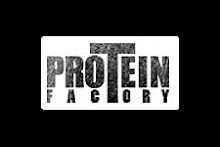Choosing which whey protein to use from the Proteinfactory.com can be somewhat difficult if you’re a beginner to protein supplementation or a first time user visiting the site. Therefore this article will give you the know-how in choosing which whey protein will fit your supplementation needs.
The first topic I will discuss is how to actually read an ingredient label and to understand the terms. Take a look at this first description that you might see on a supplement facts panel.
“Micro-filtration Whey Protein Concentrate”.
You can divide this term into 3 separate sections. The first part is the manufacturing technique. (microfiltration). The second part is the product (whey). And the last part is the protein percentage (concentrate). I will begin explaining the first set of words, “Micro-filtration”. The first set of words before the word “whey” represents the manufacturing technique. In this case it is the micro-filtration process. There are a few techniques manufacturers use to produce whey protein that I will discuss later in the article. The second word represents the product, “whey”. The third word represents the protein percentage. Only two words can be used, concentrate or isolate. “Concentrate” means that the powder is going to be 80% protein or less. For example if you took 100 grams of whey concentrate and analyzed for protein grams, 80 grams would actually be protein. The rest is made up of non-protein components, (ash, moisture, fat, carbs, and lactose). “Isolate” means the powder is 90% protein or higher. Nothing is 100% protein. The closest is the ion-exchange whey isolate at about 97% protein.
You should always have 3 parts to describe the way: The manufacturing technique, the product, and the protein percentage.
Now that you understand what the words represent, let me discuss the manufacturing techniques in more detail.
There are 4 ways to manufacture whey protein on the commercial level. The most common is micro/ultra filtration. This technique the whey is produced using what the manufacturers call “polymer filters”. These filters separate the protein from the liquid milk and whey and produce the protein. Micro/Ultra filtration technique is NOT patented by any manufacturer thus the price is always lower than any other way. Companies that use this process are “Land O Lakes”, Protient, and the company that makes the Iso-Chill. For bodybuilding purposes, use the micro/ultra filtration process if you want and whey isolate at a good economic price.
The second process is Cross-Flow Microfiltration (CFM). This process is trademarked by Glanbia Nutritionals. The CFM is the highest quality whey isolate in the world. Instead of using polymer filters that cost about $15,000 dollars and wear down like a car tire does, the CFM process uses ceramic filters. These ceramic filters cost about $150,000. They are indestructible. The CFM process results in a higher protein subfraction content and less sodium and more calcium. People that purchase the CFM whey isolate are people that are looking for the very BEST whey. A protein that is higher in growth factors and other components than micro/ultra process.
The third process in patented by Davisco foods. This process is the ion exchange whey isolate. The ion exchange manufacturing technique using chemical solvents and electron charges to separate the protein for the liquid. The ion exchange process results in the highest BCAA content and protein %. But keep in mind that you can have a concentrate or an isolate ion exchange protein. Use the ion exchange whey isolate if you want the highest protein percentage possible.
The fourth manufacturing technique that is used is called “hydrolyzation” A hydrolyzed whey protein is actually a whey protein that has been “Pre-digested”. The manufactures and enzymes to the whey protein to start the digestion process and to convert the whey protein into peptides. The maximum that a hydrolyzed protein can be pre-digested is 50%. I have never seen anything higher. So the rest of the 50% of the hydrolyzed protein is still in its “whole food” state. Use a hydrolyzed whey protein for quick digestion. Usual after post-workouts. One looks to achieve the term amionacedimia. A quick flush of amino acids entering the blood stream for a super anabolic effect.
The four manufacturing techniques described above are the only commercial available proteins used today.
Take a look at this ingredient statement found on a sample jar of whey protein that we found.
Protein Blend (Whey Protein Isolate, Whey Protein Concentrate, Whey Protein Hydrolysate),
Quite confusing isn’t it?
First off you the label doesn’t state which manufacturing technique it is. So your left guessing. Second you don’t know how much of each product they are using. Are you getting 50% whey isolate, 25% WPC and 25% hydrolyzed whey. Well, we will never know.
Take a look at this second label.
Cross Flow Micro/Ultra filtered 100% Pure Whey Protein Isolate (Beta Lactoglobulin 19,100 MW/50% Alpha Lactoalbumin 14,700 MW/20% Glycomacropeptides 16,200 MW 20%, Immunoglobulin 95,000 MW/3%, Bovine Serum Albumin 65,000 MW/2%, Protease Peptone <1% Lactoferrin <1%, Lacto Peroxidase <1%),
Wow sounds really high tech doesn’t it? The company decided to add the words “Cross Flow” to make it sound more scientific. Don’t be fooled. Now all the terms after “whey protein isolate” are the protein subfractions. These protein subfractions are all naturally occurring. They are not separately added ingredients. The label should actually look like this. “Micro/Ultra filtration whey isolate.” That’s it.
Thus, now you know how to read a supplement facts label and how to choose which whey protein will best fit your needs.
Subscribe to:
Post Comments (Atom)


No comments:
Post a Comment